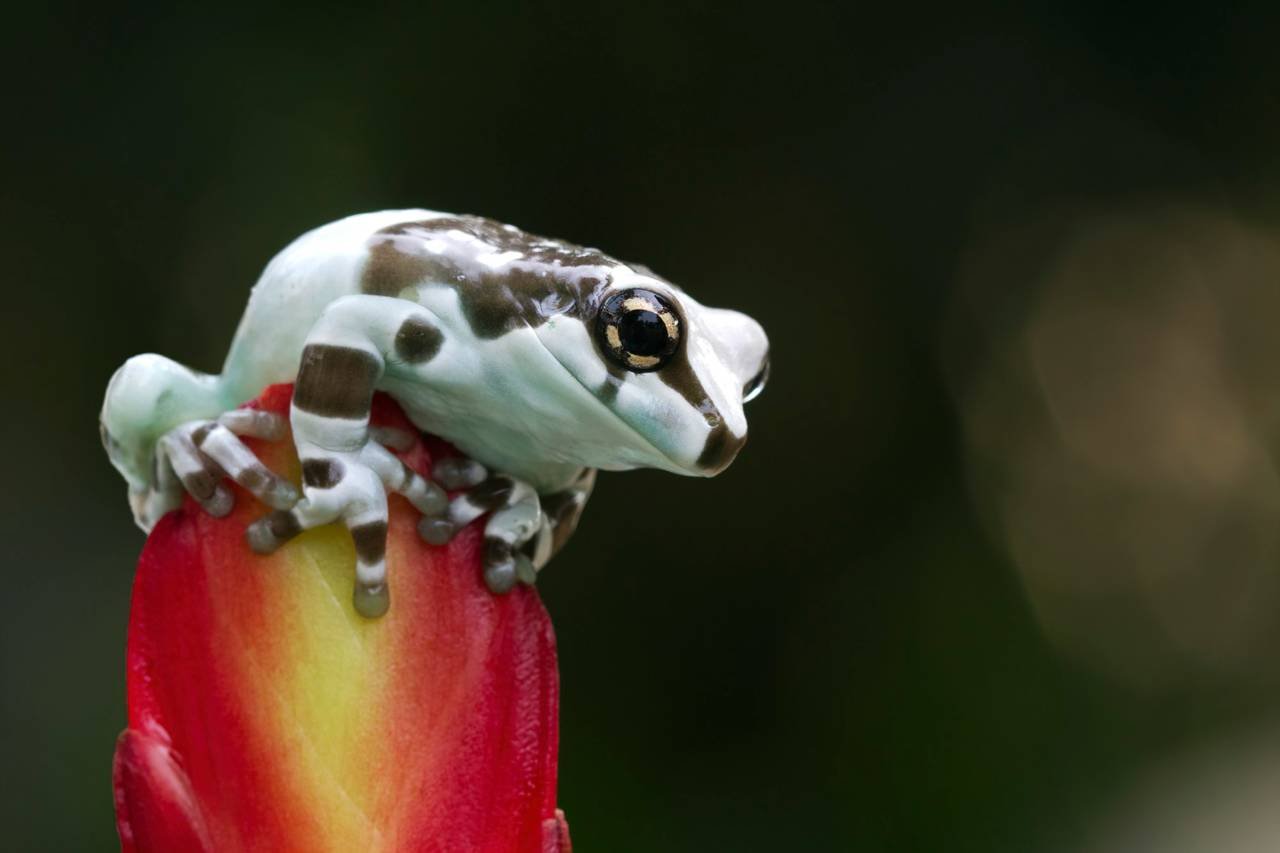The Amazon Milk Frog, scientifically known as Trachycephalus resinifictrix, is a captivating amphibian that stands out with its unique markings and intriguing lifestyle. Originating from the dense rainforests of the Amazon Basin, this frog captivates both researchers and frog enthusiasts alike. Let’s explore the fascinating attributes of the Amazon Milk Frog and discover what makes it such a unique species.
Characteristics and Appearance
The Amazon Milk Frog is named for the milky secretion it produces as a defense mechanism. This secretion helps deter predators and provides an additional layer of protection against environmental elements. The frog’s appearance is equally striking, featuring a grayish body with bold, irregular black bands and large, sticky toe pads ideal for climbing.
These frogs are relatively large for a tree frog, growing to about 2.5 to 4 inches in length. Their large size, combined with their unique coloration, makes them a visually stunning species.
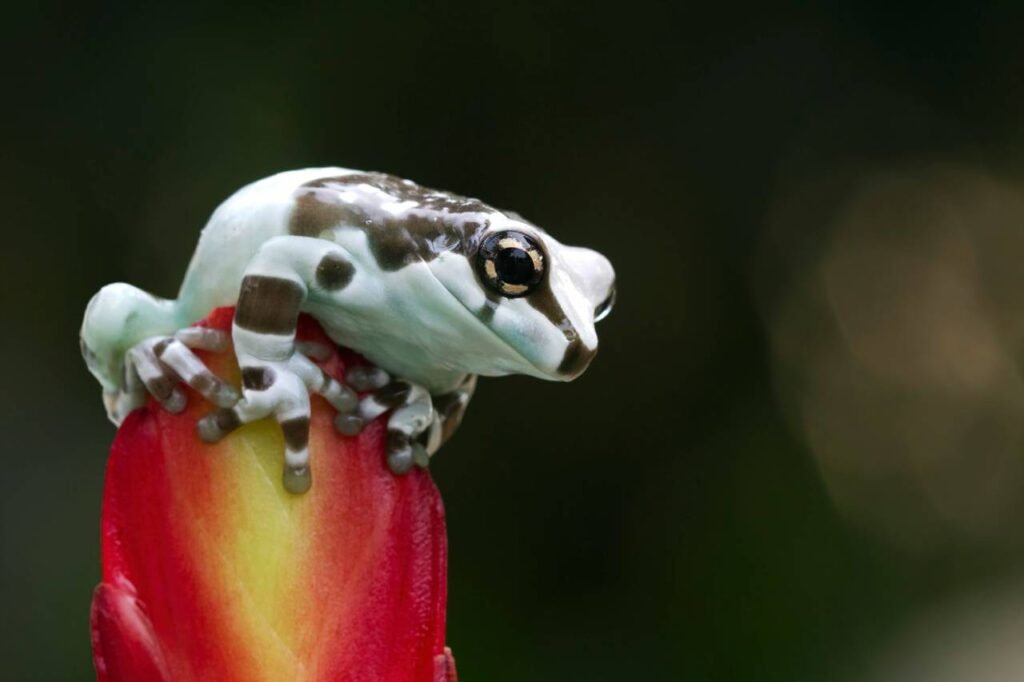
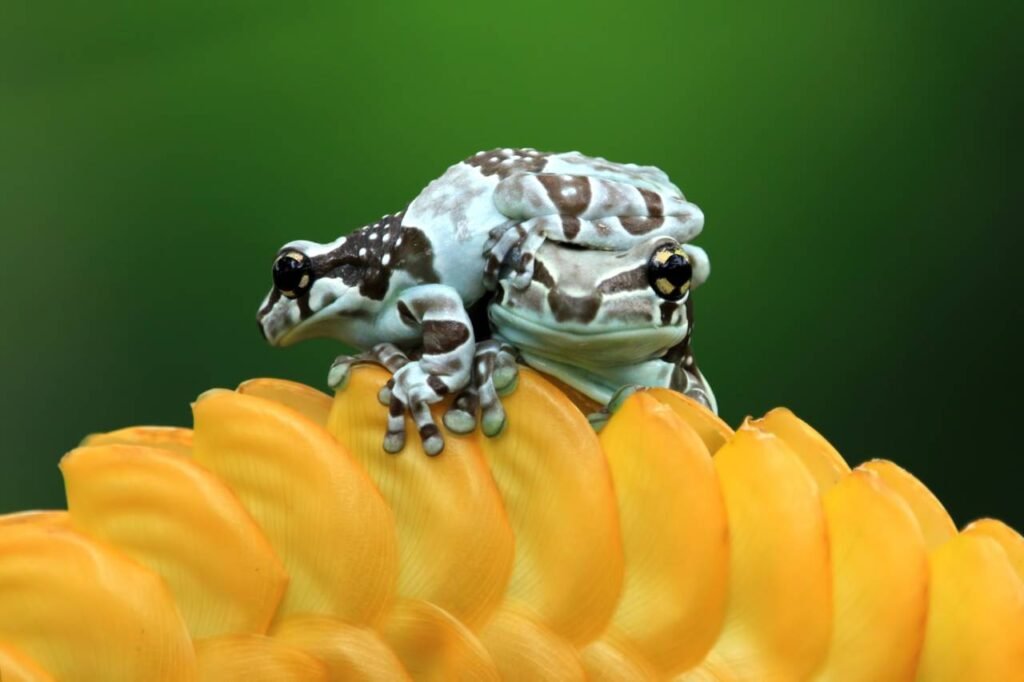
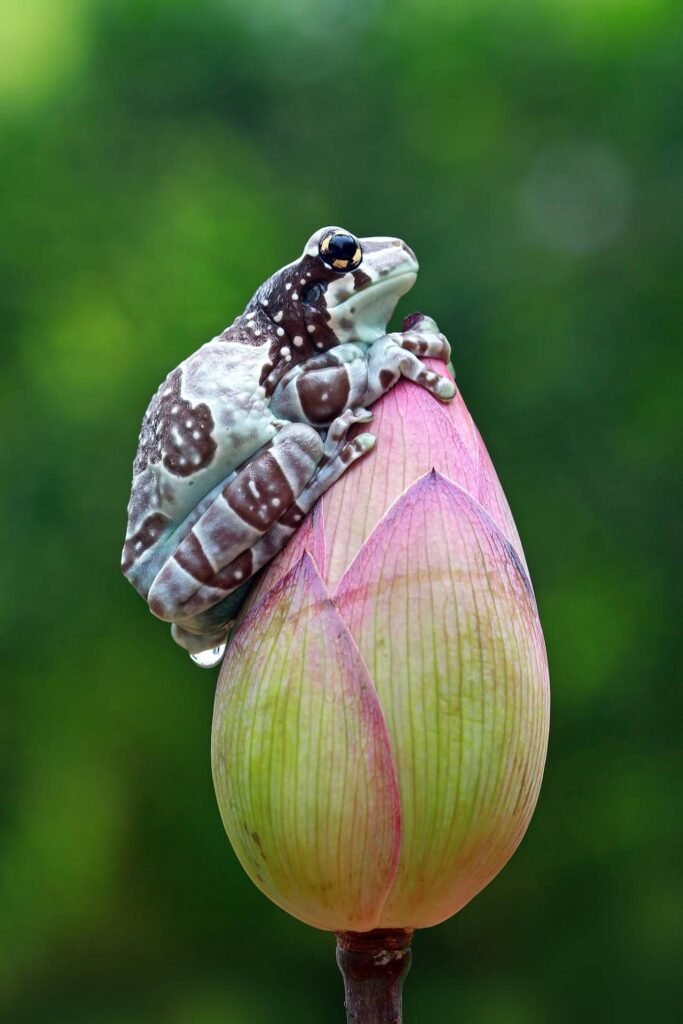
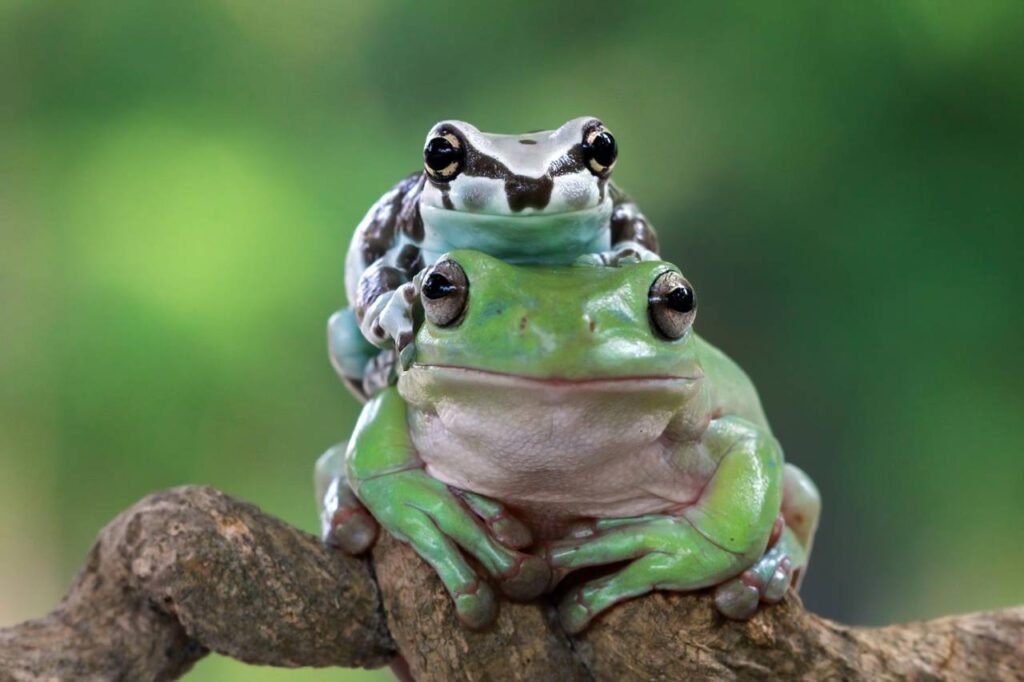
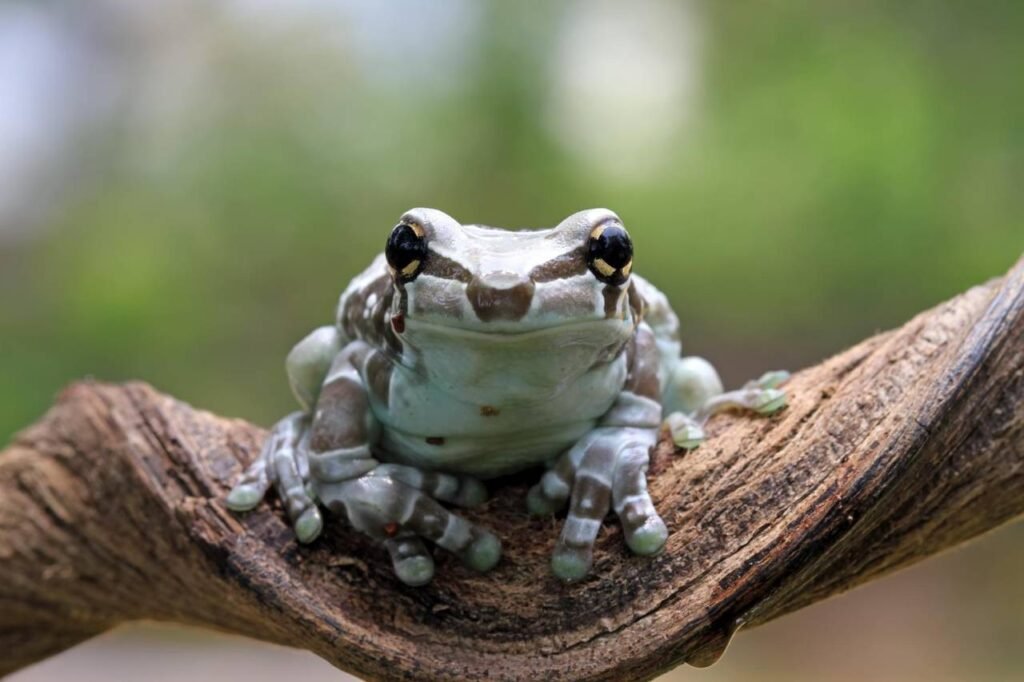
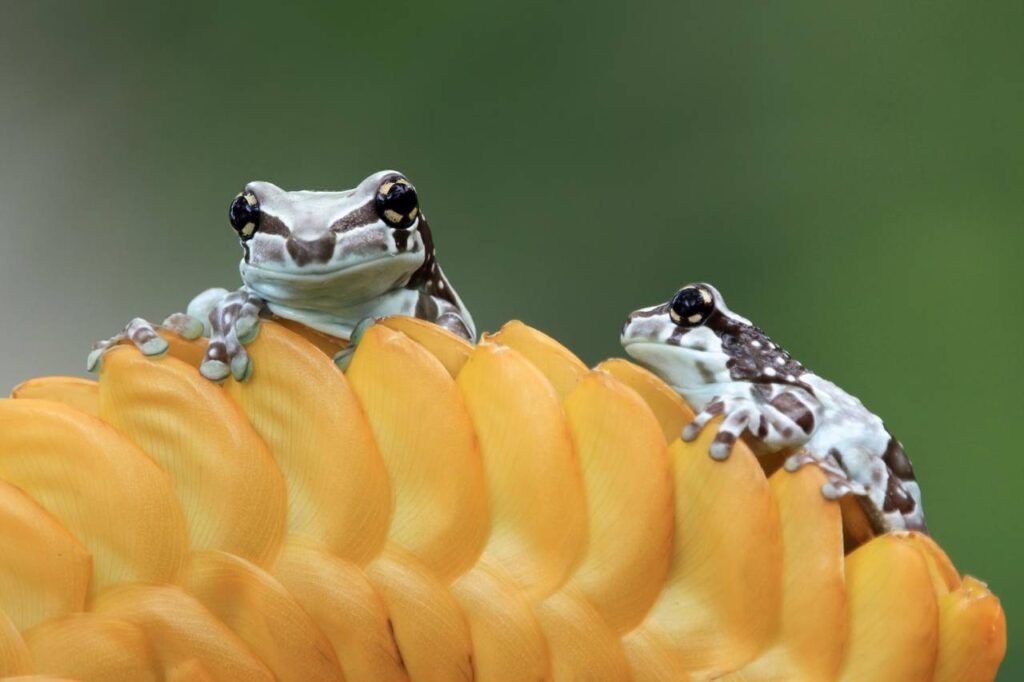
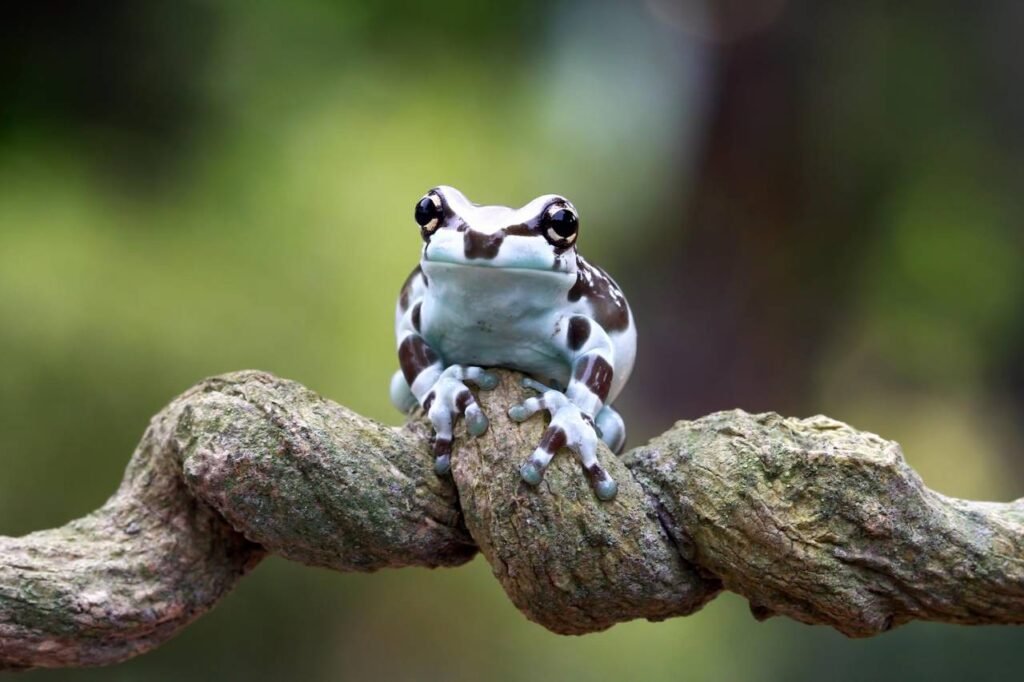
Habitat and Distribution
Amazon Milk Frogs are native to the tropical rainforests of the Amazon Basin, particularly in countries like Brazil, Colombia, and Peru. They typically inhabit the upper canopy, often found near bodies of water, which are essential for their reproductive cycle. The humid and warm environment of the rainforest provides the ideal conditions for their survival and reproduction.
Toxicity and Behavior
While the milky secretion produced by Amazon Milk Frogs can be an irritant, it is not considered toxic to humans. These frogs are generally nocturnal, spending most of their time high in the trees where they use their adhesive toe pads to navigate the foliage.
Reproduction and Lifecycle
During the rainy season, the breeding process for the Amazon Milk Frog begins. Males call to attract females, and after mating, females lay eggs in water-filled cavities, such as tree holes or bromeliads. This strategic egg-laying ensures that newly hatched tadpoles drop directly into a safe water environment. The tadpoles undergo metamorphosis and fully develop into adult frogs over several weeks to months, eventually climbing out of the water to begin life in the trees.
Conservation Status
Currently, Amazon Milk Frogs are not considered endangered, but habitat destruction due to deforestation poses potential threats to their natural habitats. Conservation efforts focus on protecting the vast rainforests they call home, emphasizing sustainable practices to ensure their long-term survival.
FAQs About Amazon Milk Frogs
What is the Amazon Milk Frog’s milky secretion used for?
This secretion acts as a deterrent to predators and provides protection against environmental elements; however, it is not toxic to humans.
Where do Amazon Milk Frogs naturally live?
They inhabit the tropical rainforests of the Amazon Basin, particularly in Brazil, Colombia, and Peru, residing primarily in the treetops near water sources.
How long do Amazon Milk Frogs live?
In captivity, Amazon Milk Frogs can live up to 8 to 10 years with proper care.
What do Amazon Milk Frogs eat?
Their diet primarily consists of insects and other small invertebrates, which they hunt at night.
Can Amazon Milk Frogs be kept as pets?
Yes, they are popular in the pet trade due to their striking appearance. They require an enclosure that mimics their natural rainforest habitat, with high humidity and plenty of climbing spaces.

